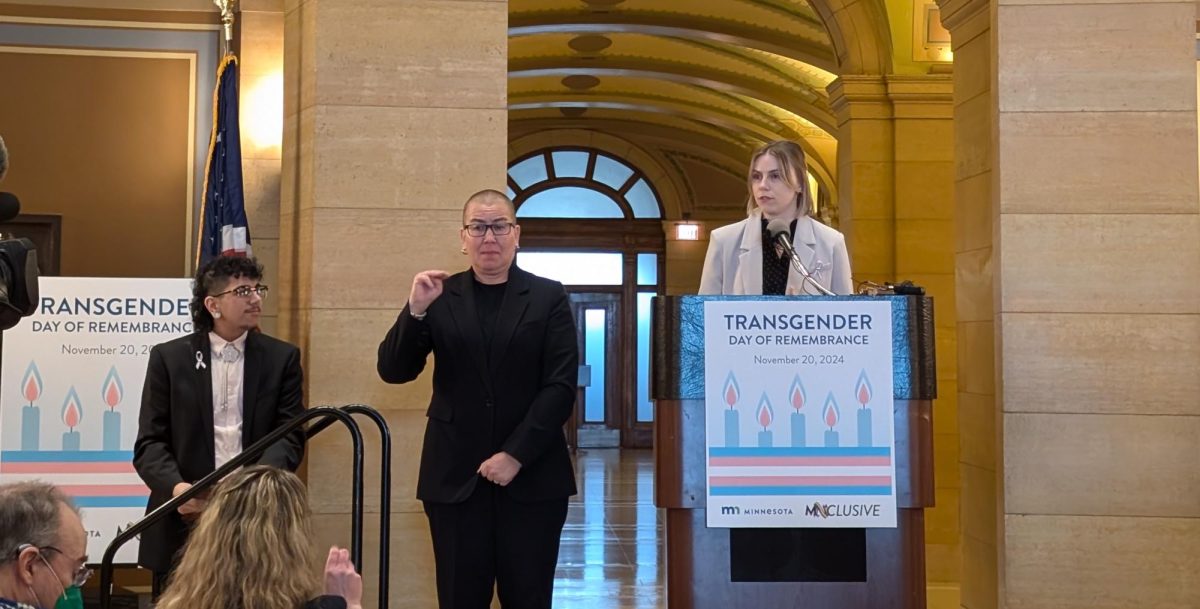As rates of fentanyl overdoses increase across the country, local addiction recovery providers find ways to start and succeed in substance recovery.
Opioid-involved drug overdoses increased by 3% in 2022 since 2021, according to the Minnesota Department of Health dashboard.
The number of admissions for opioid use treatment in Minnesota increased by about 26% from 2020 to 2022, according to the Minnesota Department of Health dashboard. Around seven out of 10 patients completed their addiction recovery treatment in 2021.
On-Campus Help
One of Boynton Health’s alcohol and drug counselors, ThanhVan Vu, said Boynton does not provide substance use disorder treatment, but clinicians can make recommendations for the next steps and refer patients to other treatment providers.
After substance use assessments and referrals, counselors at Boynton will follow up with patients to ensure they get the help they need, Vu said.
The next steps after the assessment could look different for everyone, Vu said, including other treatments such as mental health therapy.
“In some instances where it’s clear in the assessment that students don’t need the clinical criteria for addiction or substance use disorder, it doesn’t make sense to connect them to an addiction treatment,” Vu said. “It might make more sense to connect them for therapy, but a therapist that might have more background with substance use or substance misuse.”
Vu said seeing family members experience addiction recovery inspired her to join the addiction field and help others. With the stigma surrounding addiction, some people can feel isolated from society, including their family, Vu added.
“Witnessing the individual in my family really be ostracized and isolated, which further entrenched their addiction, right?” Vu said. “That’s the worst human state to be in, which is to be isolated and like flailing on your own.”
Boynton Health takes drop-in patients through their urgent counseling services and also offers Let’s Talk, a space to talk about addiction and recovery with others experiencing similar struggles. Boynton’s health promotion offers one-on-one appointments with a counselor for students to discuss concerns and their relationship with substances.
Vu said she always tries to approach her work at Boynton through a “developmental lens,” meaning students are developmentally transitioning their lives and experimenting with different substances and experiences.
“I don’t think it’s ever helpful to prescribe what students should do for themselves and their relationship with substances because it is an evolving thing,” Vu said.
Vu said Boynton Health approaches addiction recovery with the client’s physical, social, emotional, spiritual and personal accountability in mind to ensure every aspect of their life is supported.
Some people may not meet the clinical “DSM 5 TR” qualifications of substance misuse similar to how some may not meet specific criteria for mental health disorders — nevertheless, Vu said, like mental health, people can treat and overcome substance misuse.
It is important to continually talk and learn about addiction recovery in a college environment because of how many different ways students are introduced to substances, Vu said. She added it is a disservice to students to not discuss this topic.
“Being a part of our collective community discussion is going to help support and evolve someone’s understanding of substances as they traverse their college career,” Vu said.
Vu added if more people talk about substance recovery, then there will be more people capable of helping when something goes wrong.
Help near campus
Debbie Gray, regional director of Behavioral Health Group (BHG), formally called Valhalla Place, said BHG confronts addiction with medicines known as methadone and suboxone as well as counseling.
Gray said these two medications act similarly to insulin, meaning once a person is on them, they must remain on them for the rest of their life.
Methadone and suboxone are narcotics used to treat opioid dependence and are highly controlled and regulated medications because of federal and state guidelines.
Gray said because BHG is a methadone and suboxone provider, they have to thoroughly regulate treatment for patients. Gray added many patients stay on BHG’s programs for years as their treatment changes and grows with them.
“I don’t think people who are new to substance use understand how much regulation there is,” Gray said. “We kind of pick people’s brains. We have to.”
Gray said whether someone joins the field due to experience with addiction or because of a calling, they have to have a real drive for the work.
BHG Regional Outreach Manager Kristin Dostal said treating addictions mandates treating the whole person and all their struggles. People in recovery may be struggling to find a job or lack educational resources, Dostal added.
Gray said BHG strongly believes in counseling alongside using medications to help addiction treatment.
“The medicine doesn’t teach you coping skills,” Gray said. “That medicine doesn’t teach you how to deal with emotional problems or whatever, so we really kind of believe in that holistic perspective.”
BHG takes walk-ins for people who are and are not using drugs and anyone else who needs support, according to Gray. BHG’s goal is to help people get to a place where they believe recovery is possible for them.
BHG has around 117 locations across the country. There are locations in Minneapolis, Woodbury, Brooklyn Park and Brainerd. Gray said BHG hopes to expand further north in Minnesota to help native communities who are hit hard by addiction.
Native American Minnesotans are 10 times as likely to die from overdose than white Minnesotans, according to 2021 reports from the Minnesota Department of Health dashboard. Black Minnesotans were three times as likely to die due to overdose compared to white Minnesotans in 2021.
Gray said because of the strong potency of drugs recently, people need to be more open-minded.
“The addiction field and society have to look at things in a different way,” Gray said. “We can’t shame people in the treatment. It’s not working and then people are dying.”
Similar to the mental health field, the addiction field has become more talked about in the last six to seven years, according to Dostal. Like mental health, Dostal hopes more people will become comfortable talking about their recovery and spread awareness.
“I hope that people aren’t ashamed when they come and walk through our doors,” Dostal said. “I hope we can get to a point where people say that, ‘Yeah, I take methadone because the drug is so powerful.’”
Off-Campus Help
Kate Harris, director of the Alliance Wellness Clinic Treatment in Bloomington said Alliance is a medication-assisted treatment program that, like BHG, uses the medicinal use of methadone and suboxone to treat patients.
Harris said methadone is usually more successful in treating substances with certain amounts of fentanyl, but it always depends on the person.
Many substances can be mixed with fentanyl to increase the substance’s potency, according to the U.S. Drug Enforcement Administration. Nearly 75,000 deaths due to fentanyl were reported by the U.S. Center for Disease Control in 2023, an increase of about 2% from the previous year.
Harris said she joined the addiction treatment field because she is a helper at heart and knows there is always a need for addiction counselors. Even though the job is tough, Harris said seeing people successfully complete treatment will always inspire her to keep going in the field.
“They’re sober. They’ve got their life in order. They’re doing good, and they start to want to taper down off their medication and get off the program,” Harris said. “When they do that successfully, I tell them, ‘I am so happy for you and I hope I never see you again.’”
Harris said one of the biggest struggles people face in addiction recovery is making that initial decision to reach out for help. Harris said Alliance tries to help people get through all their struggles such as financial need and help being more social during their recovery process.
“Some people have a lot of felonies or legal problems because of use,” Harris said. “There’s just a lot. There’s really a lot that goes into it. We try to help them unpack that.”
Harris said that, alongside medication, Alliance makes referrals to other programs and groups to help people go back to school, get a job or find more friends. Another challenge for people misusing drugs is expanding their community outside of people who are also misusing drugs, Harris added.
“We have to be very open-minded, non-judgmental,” Harris said. “It’s person-centered care. We have to meet them where they’re at. Maybe someday they’ll stop using all together and maybe they won’t. That’s their decision.”
Harris said she received a lot of support from their coworkers and others in the field when the job hits too close to home and becomes stressful. She added she usually compartmentalizes her emotions to ensure she can help patients properly.
“This is their story,” Harris said. “It’s not my story.”




















